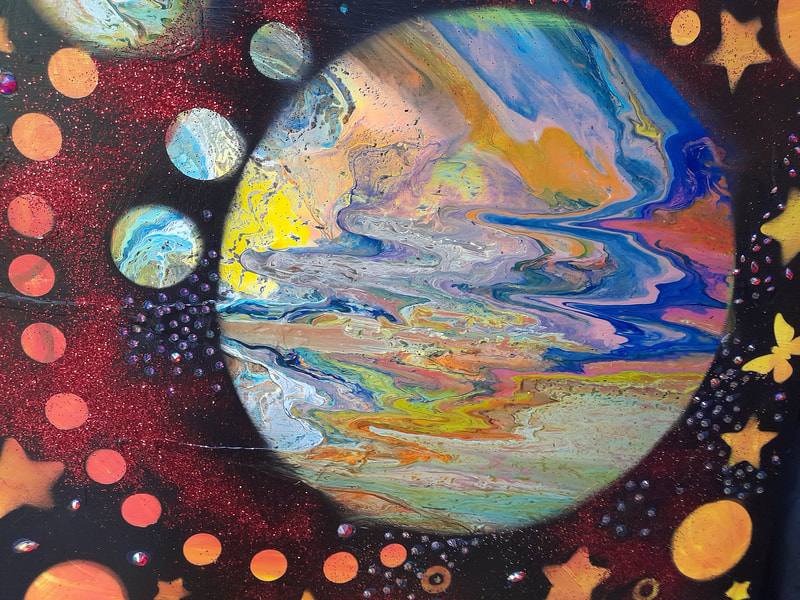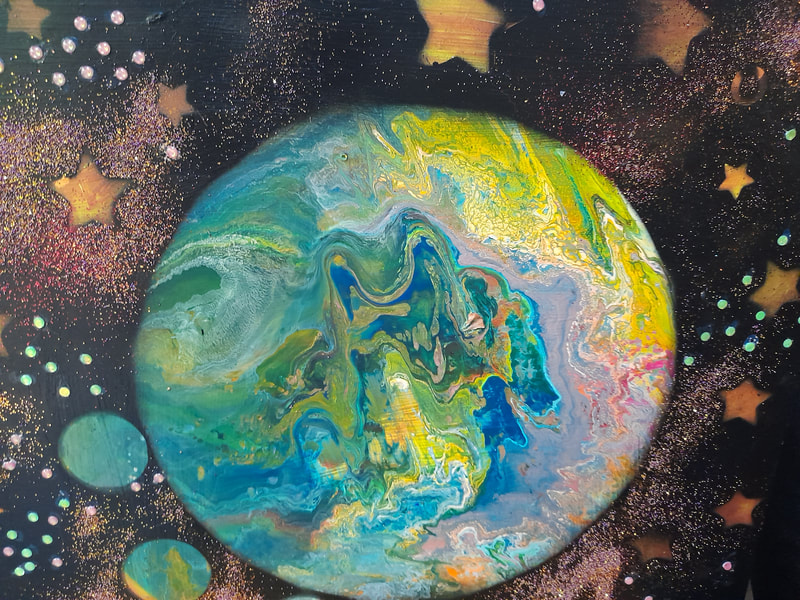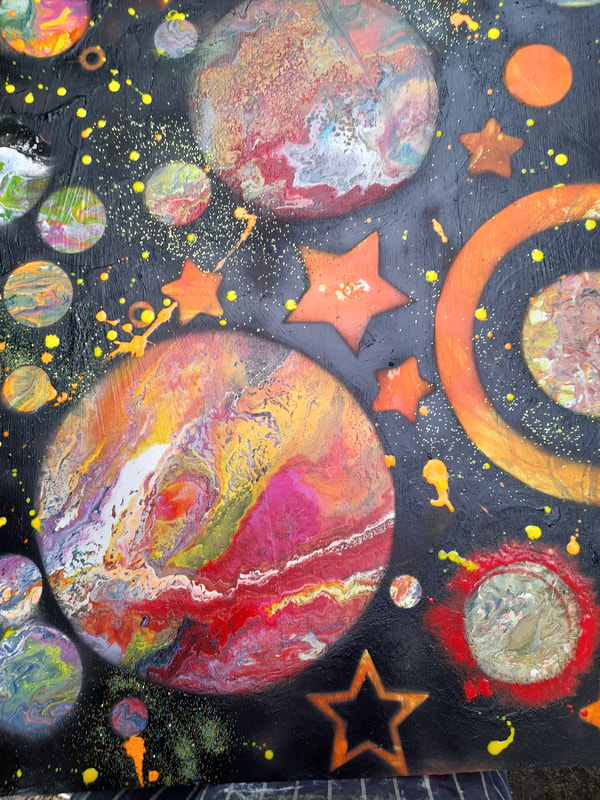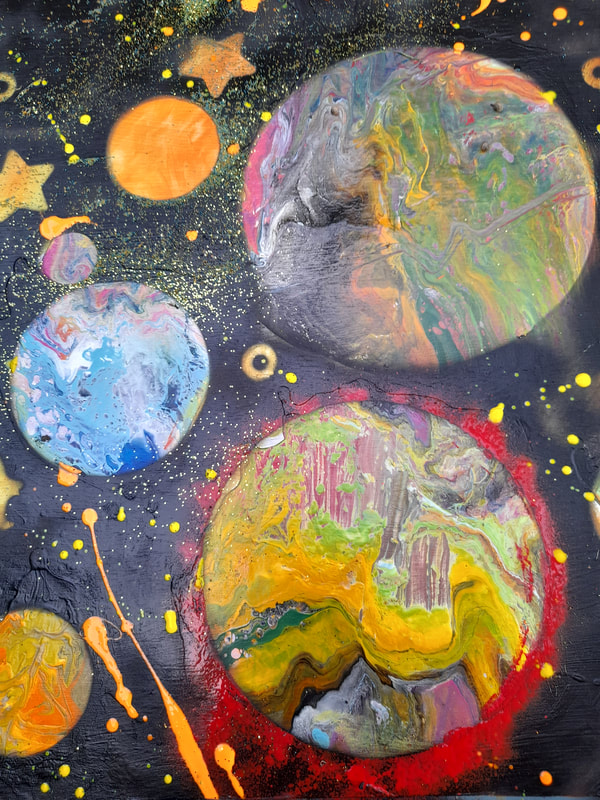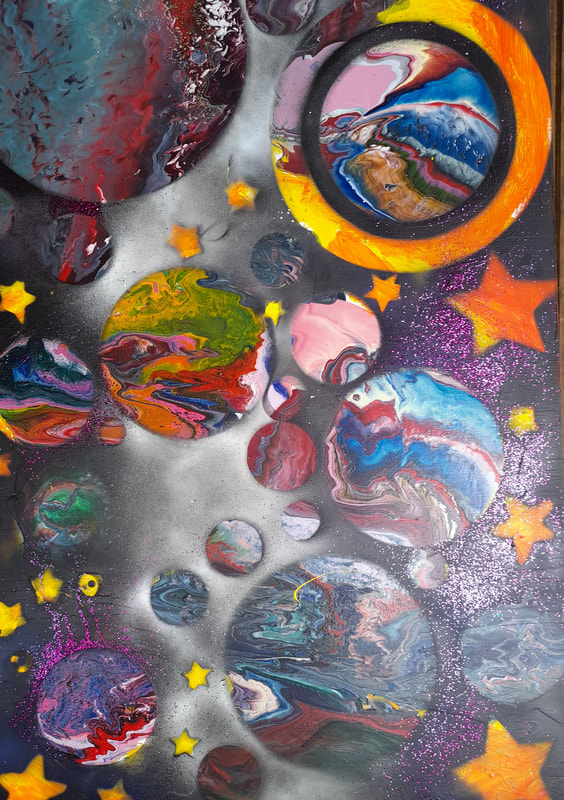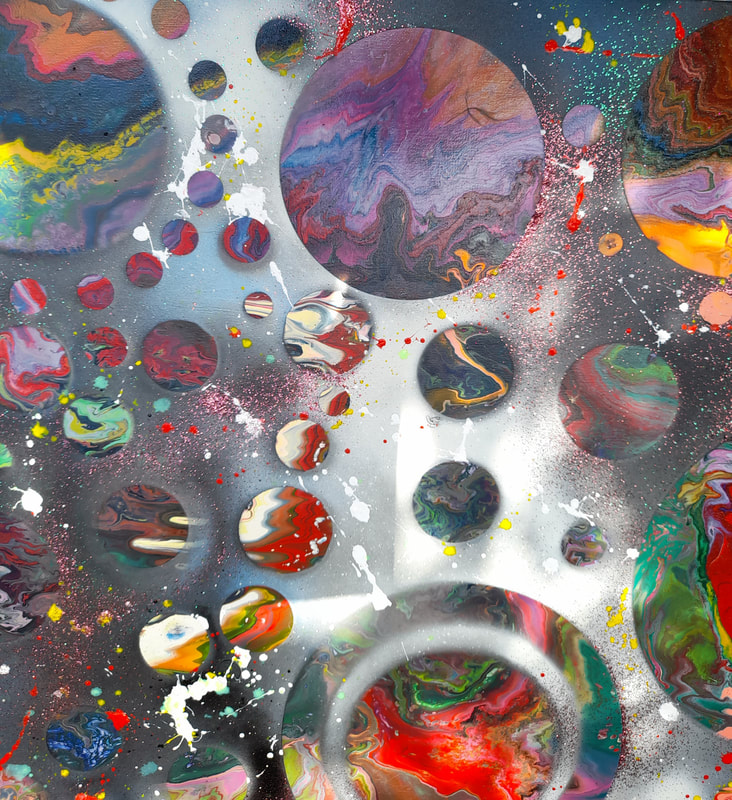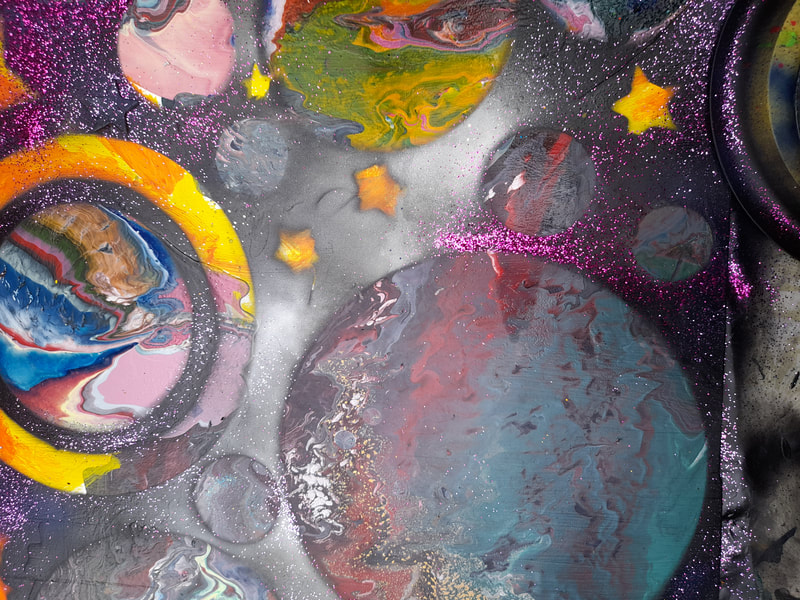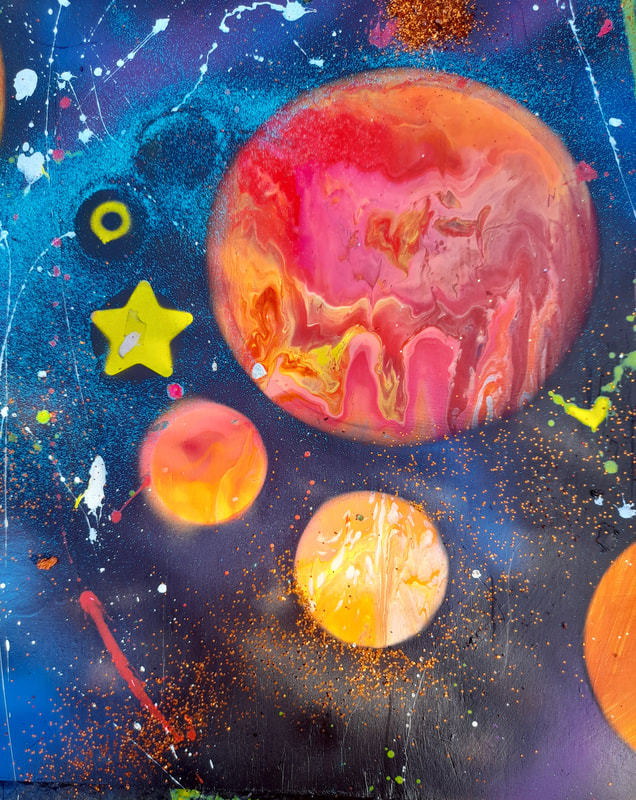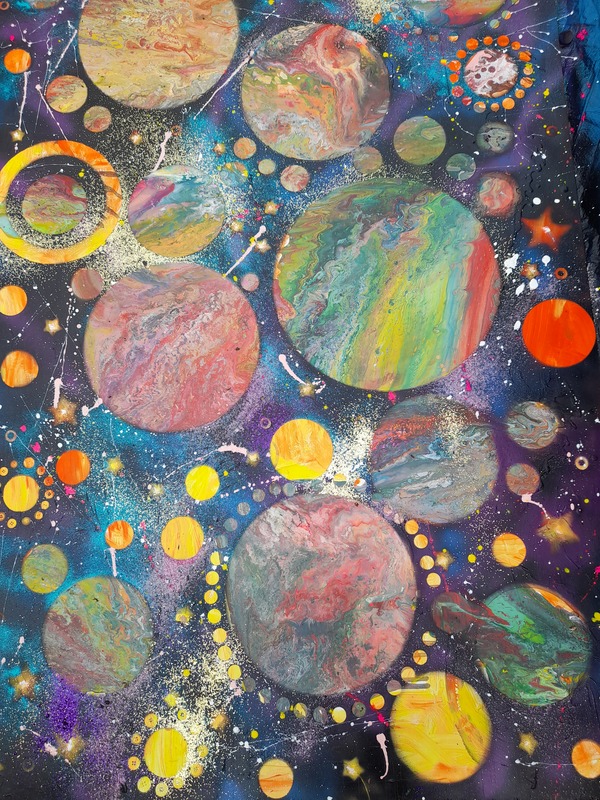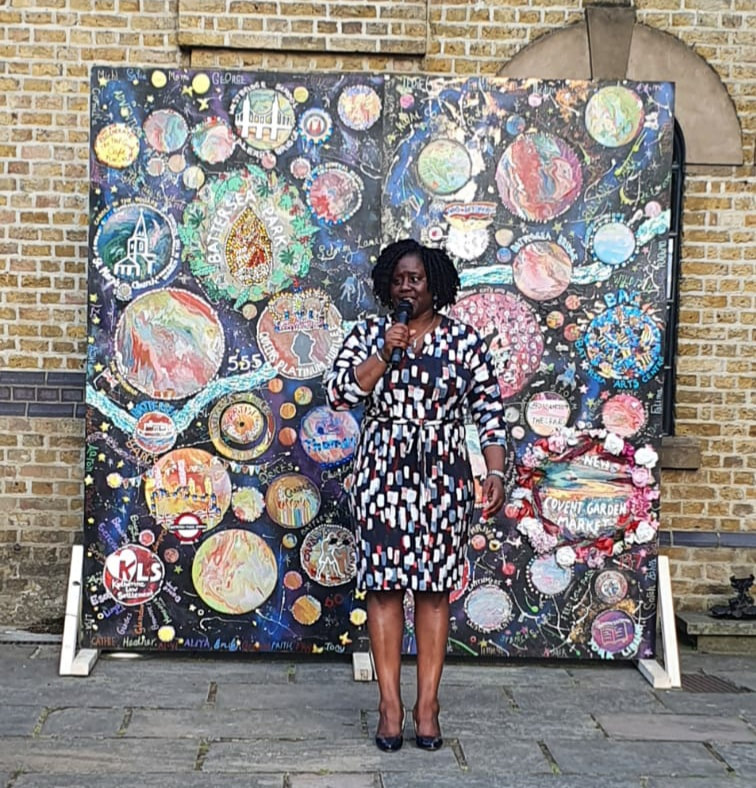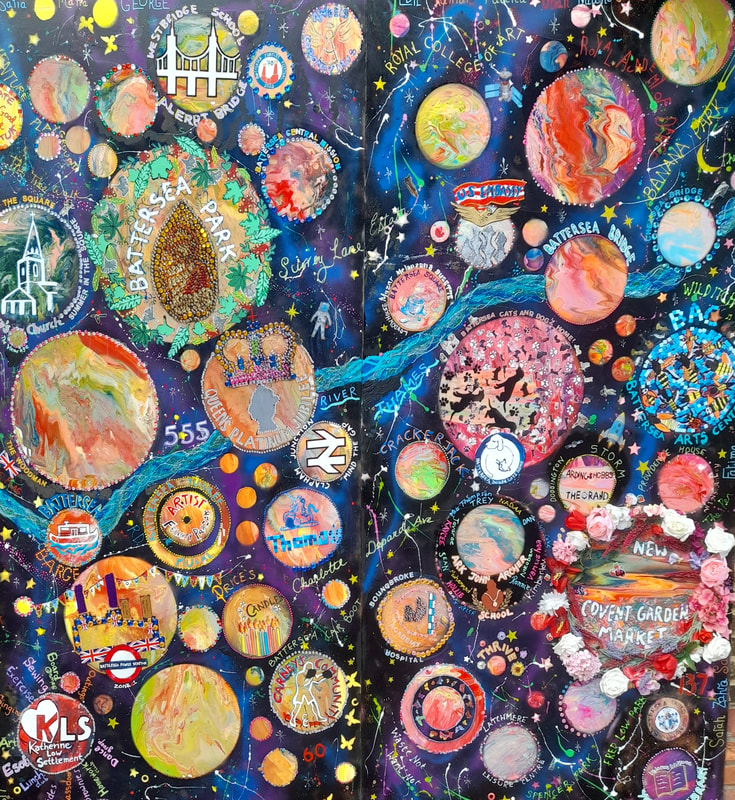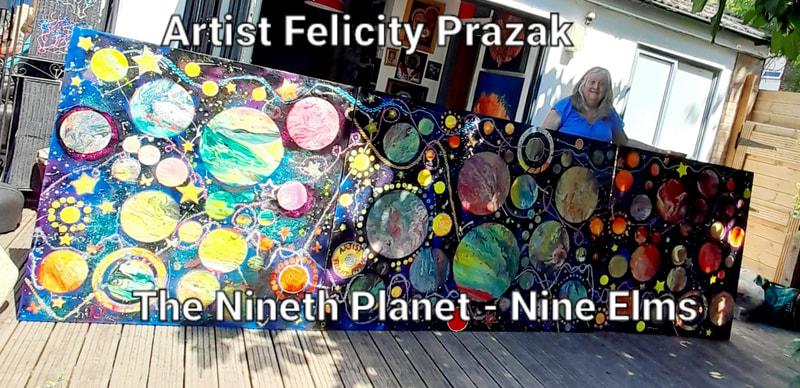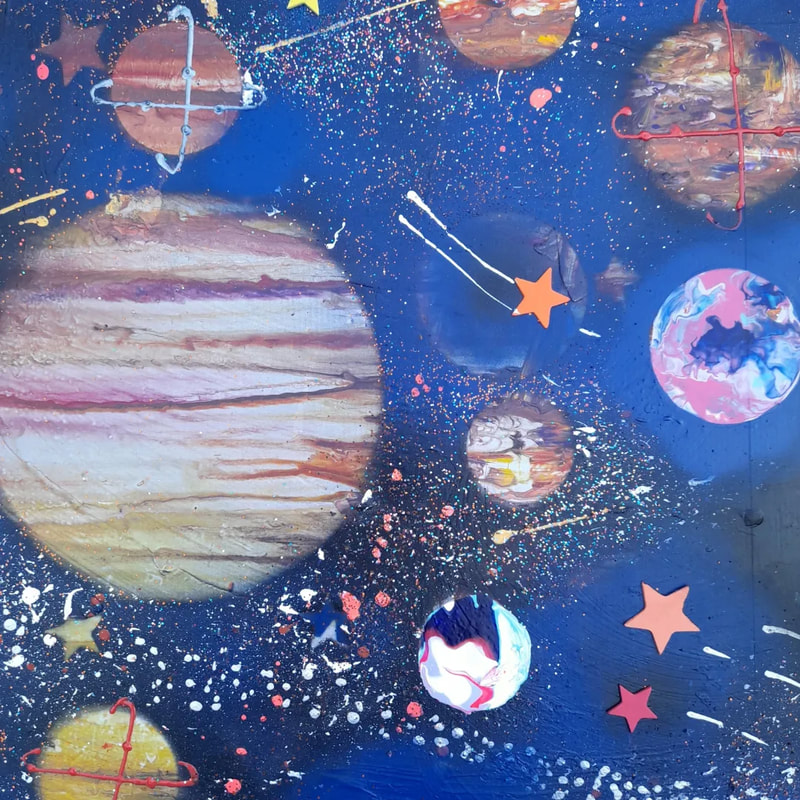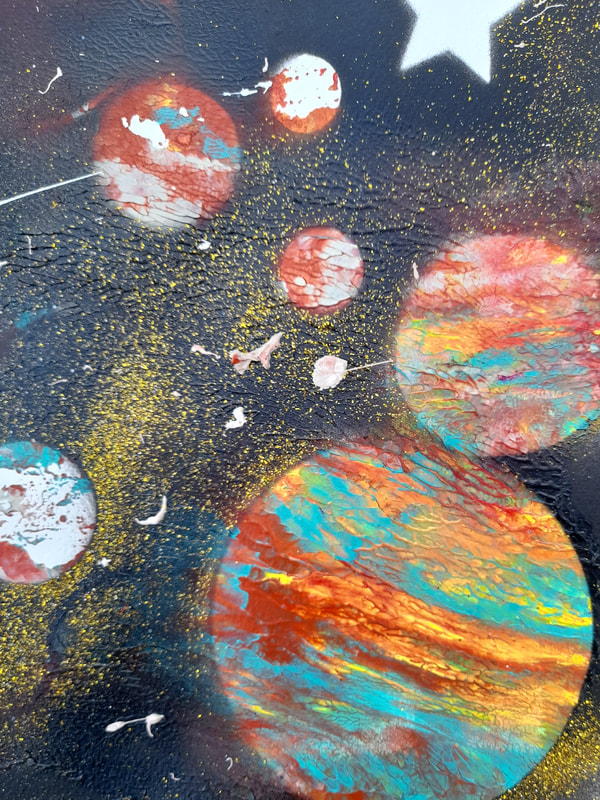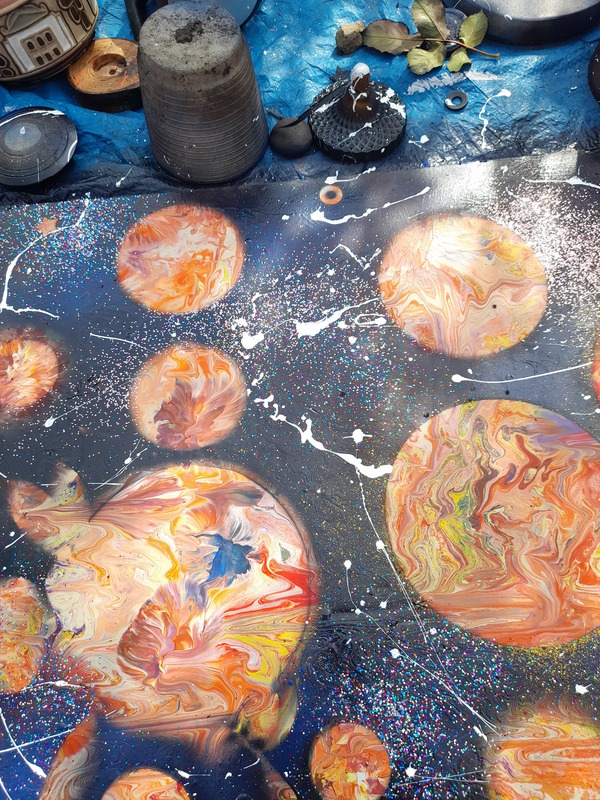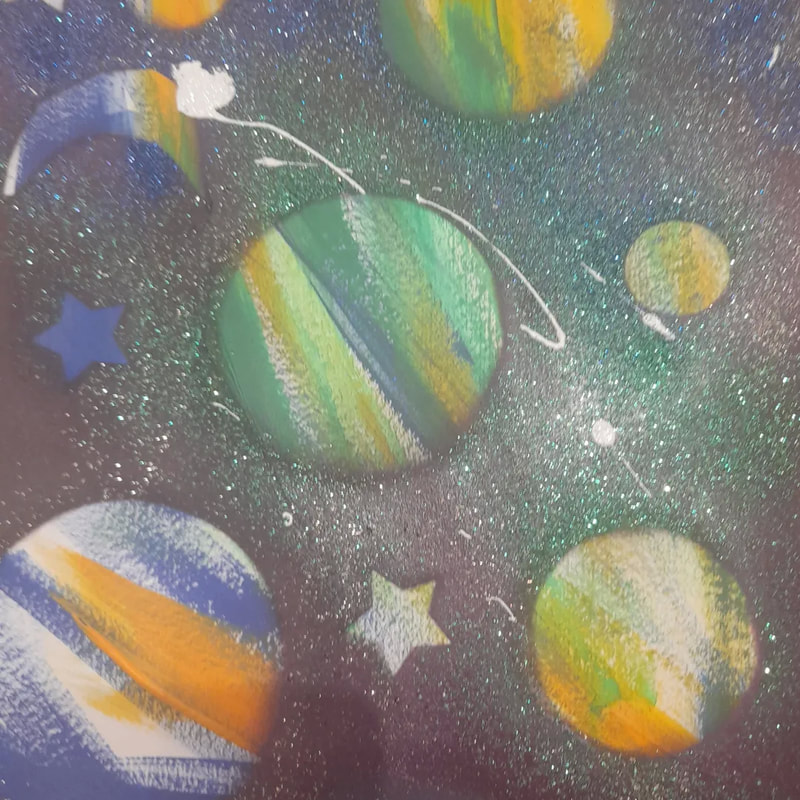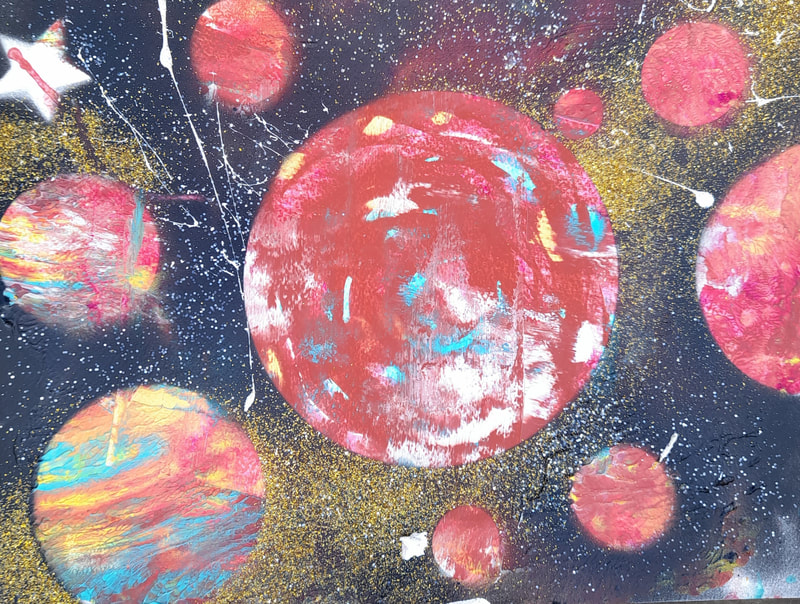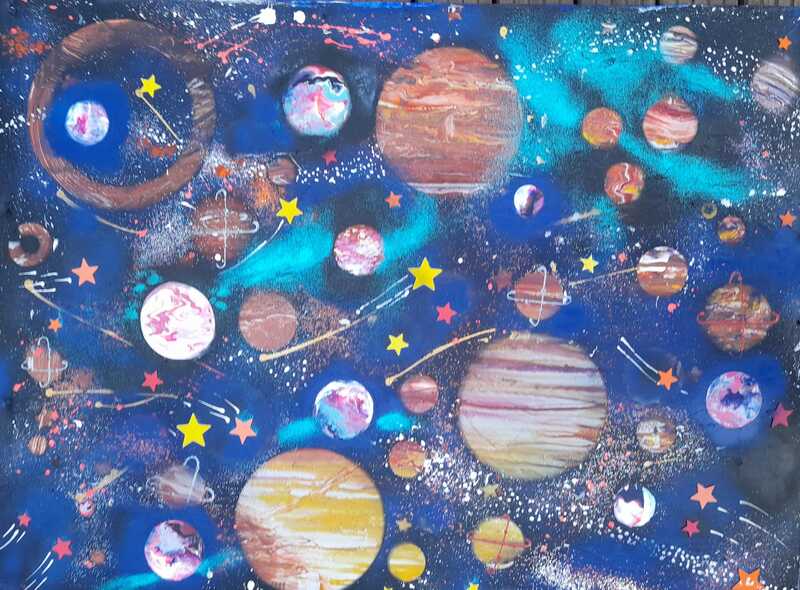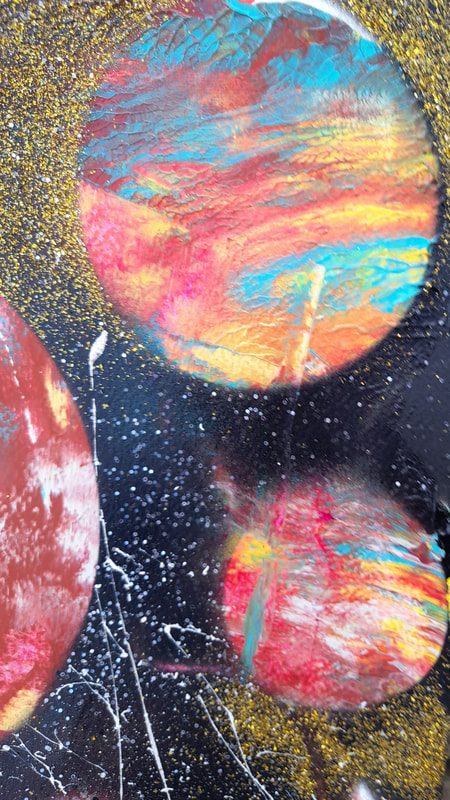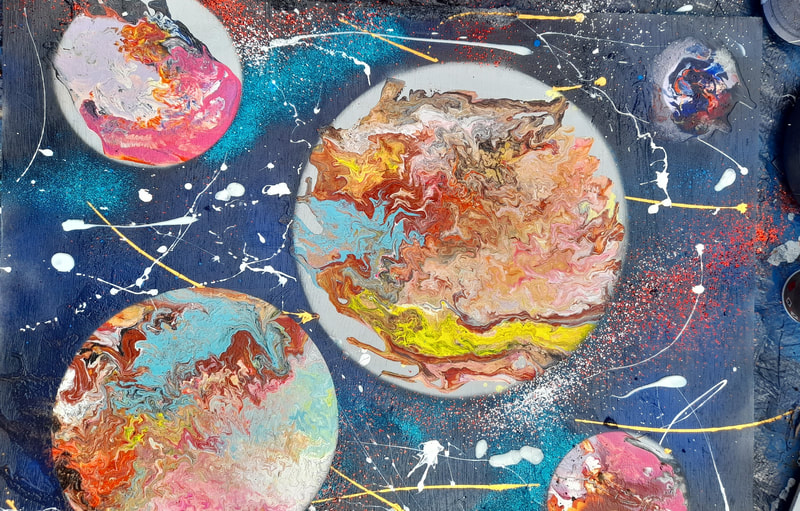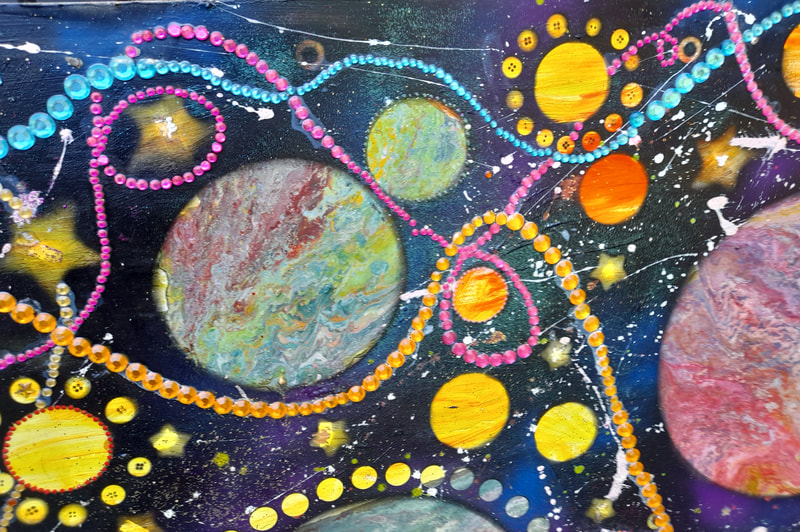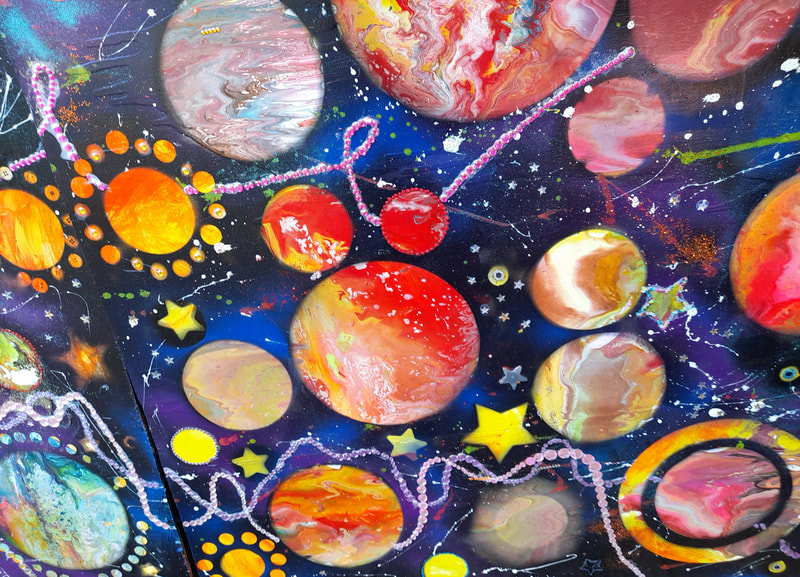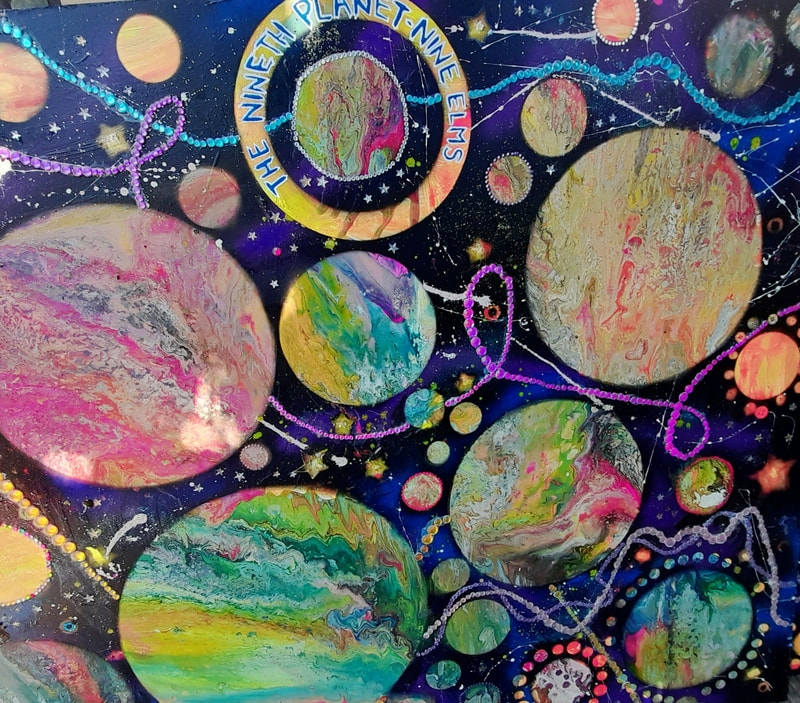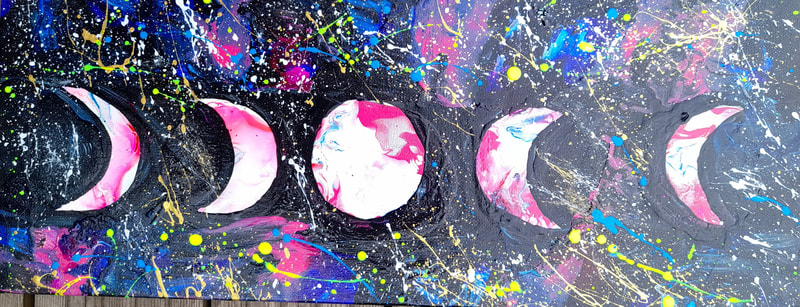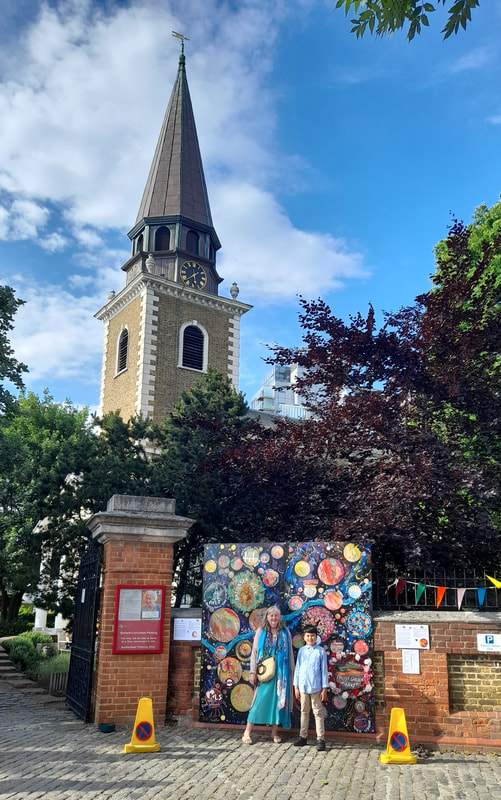Felicity was very fortunate to be commissioned for two major projects working in the community
BATTERSEA ICONS THE NINTH PLANET
|
BATTERSEA ICONS was commissioned for the Queens Jubilee Celebrations by Battersea Jubilee Festival Committee. It is intended to be a travelling mural and be sited at the various landmarks in Battersea over the Jubilee Year. Felicity worked with over 60 people in two community groups: 1 Arch John Archer School 2. Katherine Low Settlement Mural 8' x 8' |
THE N INETH PLANET was commissioned by Wandsworth Council and chosen by local people for the theme of Movement and Metaphorist
Felicity worked with two community groups from the R.O.S.E. centre, the 17th Power Station Brownies and the Yoga group as well as the over 60's lunch club at S.T.O.R.M community centre on the Doddington Estate. The mural will be put in situ on Mace's hoardings opposite Battersea Dogs and Cats Home Mural 14' x 4' |
